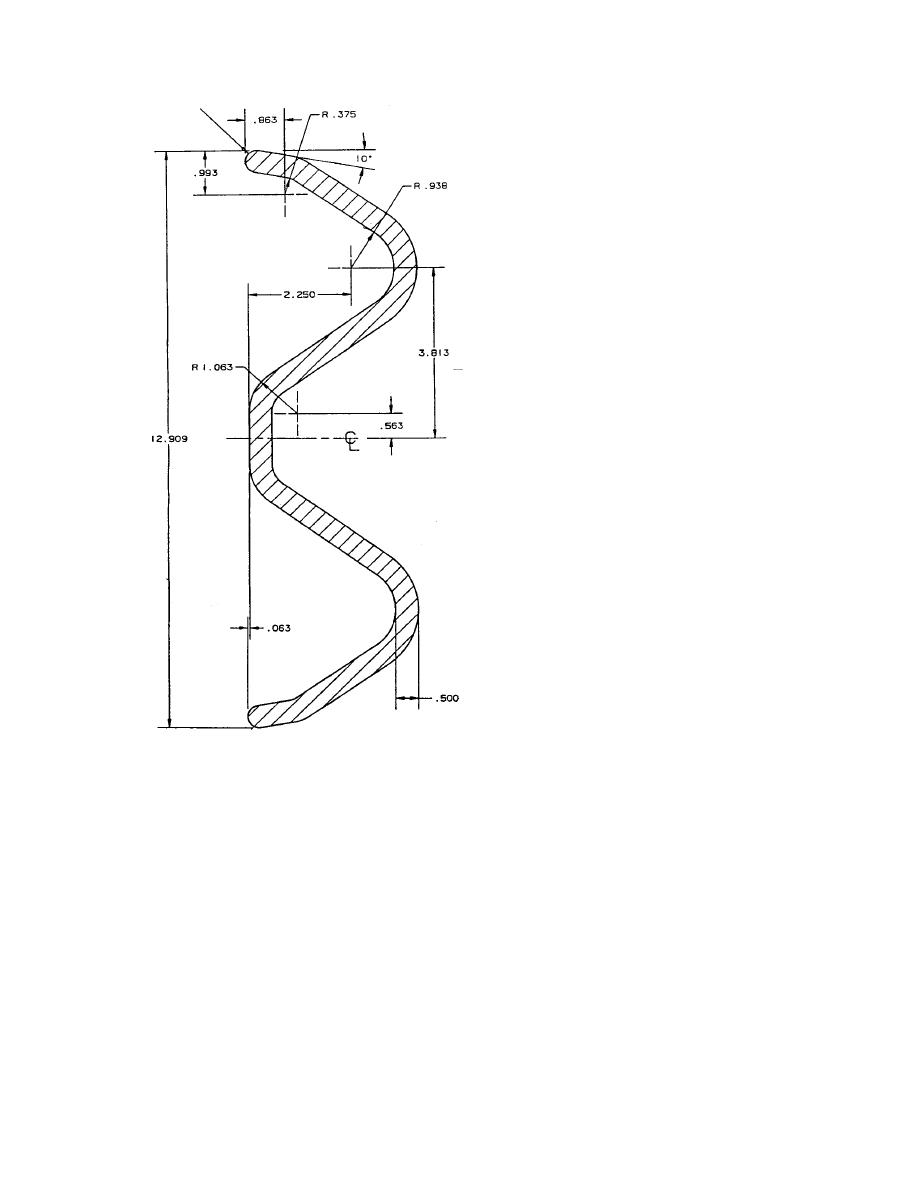
0.01 in.
Dimensional tolerance:
Length of each section:
16 ft
No. of sections req'd:
10
Material:
Fiberglass/polymer composite
Tensile strength > 70,000 psi
Young's modulus > 3,000,000 psi
Figure 15. W-beam design, 12.7 mm (0.5 in.) thick, using FRP composite.
By changing the profile and, if necessary, the cross
GPa (3 million psi) for glass-reinforced polyester
section, these variations in stiffness could be
composites, and about 137.8 GPa (20 million psi)
achieved.
for graphite epoxy composites. Thus, unless the
The design analysis for the composite beams
value of I is increased under the same loading
conditions, the deflection δ for the polymeric
also considered preventing permanent bending
caused by holding the piece at each end. Assum-
material will become unacceptably high. Low-
ing the beam is simply supported at each end
modulus plastics or composites can compete with
and is loaded by its own weight, the maximum
high-modulus steel only if the I value can be
moment occurs in the center of the beam:
changed by the proper design of the shape. In
designing composite beams, shape and thickness
Mmax = wL2/8
(2)
would be optimized for the required flexibility.
Initial sensitivity studies also showed that proto-
where w = weight
type FRP W-beams could be fabricated to have
L = length
approximately one-third, one-half, two-thirds,
M = moment
and the full stiffness of a 12-gauge steel W-beam.
14




 Previous Page
Previous Page
